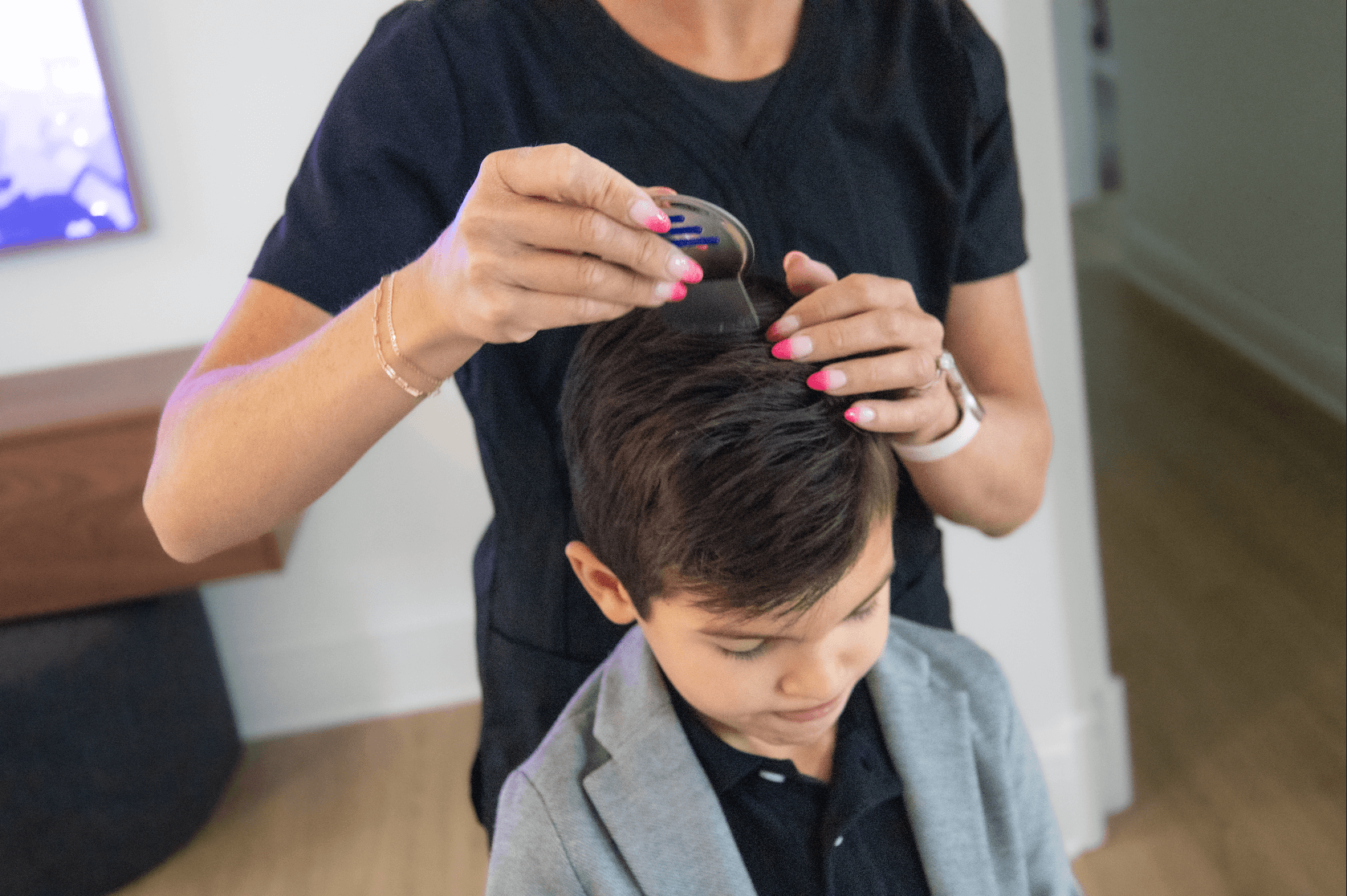
Recognizing a Lice Infestation
Lice, ticks, and fleas are common parasites that can cause discomfort and concern for many people. Although they all fall under the category of pests, they are quite different in terms of their appearance, behavior, and the health risks they pose. In this post, we’ll break down the key characteristics of each to help you identify and address any potential infestations.
Lice: Small but Persistent
- Appearance: Lice are tiny, wingless insects that are about the size of a sesame seed. They are typically pale or translucent, but may appear darker after feeding.
- Habitat: Lice live and breed on the human scalp, attaching their eggs (nits) to hair strands. They are spread primarily through direct head-to-head contact.
- Feeding Habits: Lice feed on human blood, and while they don’t transmit diseases, their bites can cause itching and irritation.
- Transmission: Lice are transmitted mainly through close personal contact, such as sharing hats, combs, or headrests. They cannot jump or fly but can crawl from one person to another.
- Treatment: Professional comb-out methods and specialized lice treatments are the most effective ways to remove lice. It’s important to act quickly to prevent the spread to others.
Ticks: Tiny but Dangerous
- Appearance: Ticks are larger than lice, ranging from the size of a pinhead to a small marble. They are usually brown or reddish-brown in color, and their appearance changes after feeding as they become engorged with blood.
- Habitat: Ticks live in grassy or wooded areas and latch onto animals or humans passing by. They tend to attach to areas like the scalp, neck, or behind the ears.
- Feeding Habits: Ticks also feed on blood, but unlike lice, they bite into the skin and remain attached for an extended period.
- Transmission: Ticks can carry and transmit a variety of diseases, such as Lyme disease, Rocky Mountain spotted fever, and babesiosis. The risk of disease transmission increases the longer the tick stays attached.
- Treatment: The best way to remove a tick is by using fine-tipped tweezers to pull it out gently without twisting. It’s important to seek medical attention if the tick has been attached for more than 24 hours or if you develop symptoms of a tick-borne illness.
Fleas: Jumping Pests
- Appearance: Fleas are small, wingless insects that are dark brown or black and about 1/8 inch long. They have strong hind legs that allow them to jump long distances.
- Habitat: Fleas are most often found on pets, particularly cats and dogs, but they can also infest homes, especially in areas with carpeting or bedding.
- Feeding Habits: Fleas feed on the blood of mammals and birds. Their bites often cause itching and irritation, and can lead to allergic reactions in some individuals.
- Transmission: While fleas can transmit certain diseases like the plague and typhus, they are more commonly associated with the transmission of tapeworms to pets.
- Treatment: Fleas can be treated with topical flea preventatives or medications prescribed by a veterinarian. Regular cleaning and vacuuming are also important to remove flea eggs and larvae from your home.
Key Differences
- Lice: Live and breed on the human scalp, spread through close contact, cause itching, and can be combed out by professionals.
- Ticks: Live in outdoor areas, attach to the skin for extended periods, can transmit serious diseases, and require careful removal.
- Fleas: Found on pets and in homes, known for their jumping ability, and can transmit diseases to both pets and humans.
Get Treatment
If you suspect a lice, tick, or flea infestation that you cannot manage on your own, or if over-the-counter treatments aren’t effective, consider reaching out to a professional. They can provide safe, effective solutions to help you manage the infestation and minimize the risk of spreading it to others.
Check out the Lice Removal Network to find a lice clinic in your area, offering you safe and effective treatment.
Frequently Asked Questions:
How do you tell if you have lice or fleas?
Lice are small, wingless insects that attach to the hair and scalp, while fleas are usually found on pets and bite the skin. Lice cause itching on the scalp and are often seen as tiny white or yellowish eggs (nits) attached to the hair shaft. Fleas, on the other hand, are typically found on pets or in the home and leave small, red, itchy bite marks on the skin.
Can ticks live in human hair?
Ticks can attach to human skin, including the scalp, but they don’t live in hair like lice do. Ticks latch onto the skin to feed on blood and can remain attached for extended periods, but they don’t actively live or reproduce in hair.
Why do I feel something crawling in my hair but no lice?
If you feel something crawling in your hair but don’t have lice, it could be due to other scalp conditions like dry skin, dandruff, or irritation from hair products. Sometimes, a feeling of crawling can also be caused by anxiety or sensitivity in the scalp area.
